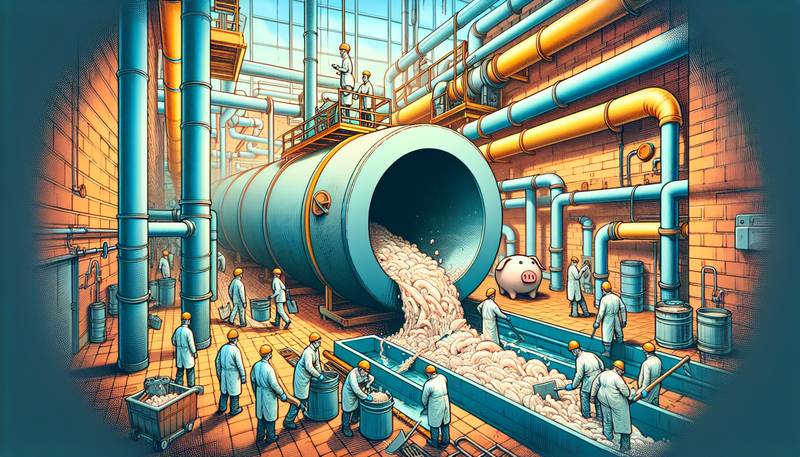Increasing Profits with Pigging: Innovations in Food Processing

What on Earth is Pigging?Before you start picturing a farmyard full of pigs frolicking amidst food production, let me clarify what "pigging" actually means. In the food processing industry, pigging refers to a process that uses flexible, cylindrical foam projectiles, affectionately known as "pigs," to clean pipes and transfer food products between processing stages. Rather than referring to our porky friends, these pigs are designed to scrape the insides of pipes, recovering valuable product and reducing waste. And let me tell you, these pigs are making quite an impact in the world of food processing.Why Pigging is a Game-Changer for the Food Processing IndustryThe food processing industry is, quite literally, a mess. Pipes and hoses get clogged with food product, requiring extensive cleaning and wasting valuable resources. Enter the humble pig, an unsung hero that can recover up to 99% of residual product from pipelines. This is quite the feat, considering that traditional cleaning methods, such as flushing with water or even just banging the pipes in frustration, are far less effective.By incorporating pigging into their processes, food manufacturers can not only reduce waste but also cut down on water usage and cleaning time. This results in a trifecta of benefits: lower costs, increased production capacity, and a smaller environmental footprint. Who knew that such a silly-sounding process could have such serious implications for the industry?Getting Started with Pigging: Which Pigs to Choose?There are a plethora of pigs available on the market, each designed for specific types of food products and processing conditions. Some pigs are better suited for viscous products, while others are better for those with lower viscosity. There are even pigs designed for use in high-temperature environments. Choosing the right pig for your specific needs is essential to maximizing the benefits of pigging.When selecting a pig, consider the following factors:- Product viscosity and flow properties
- Pipe diameter and material
- Temperature requirements
- Required level of product recovery
With the right pig in hand, you're one step closer to reaping the rewards of this innovative process.Pigging in Action: Case Studies of SuccessStill skeptical about the potential of pigging to revolutionize your food processing operation? Allow me to present a few case studies that demonstrate the power of these mighty foam projectiles.Case Study 1: The Sauce BossA large-scale sauce manufacturer, tired of seeing their profits literally go down the drain, decided to implement pigging in their production process. The company used pigs to transfer sauce between mixing tanks and filling stations, significantly reducing product waste and cleaning time. After implementing pigging, the company saved an astonishing $200,000 per year in product recovery alone. That's a lot of sauce, folks!Case Study 2: The Dairy DarlingA dairy processing plant, struggling with high water usage and lengthy cleaning times, turned to pigging for a solution. By incorporating pigs into their production and cleaning processes, the plant was able to reduce water usage by an incredible 50% and cut cleaning times in half. The result? A significant boost in production capacity and a much happier, less soggy workforce.Case Study 3: The Beverage BonanzaA beverage manufacturer, fed up with slow product changeovers and high waste levels, adopted pigging into their operations. With the help of our foam friends, the company was able to reduce product changeover times by over 75% and recover up to 99% of residual product in their pipelines. The savings on wasted product and increased operational efficiency translated to an estimated $150,000 in annual savings. Cheers to that!Ready to Embrace the Power of the Pig?If you're in the food processing industry and are looking for ways to increase profits, reduce waste, and improve operational efficiency, it's time to consider implementing pigging into your processes. Don't let the whimsical name fool you – pigging is a serious innovation with the potential to transform your business for the better.So go forth, and may the power of the pig be with you!
|
|







